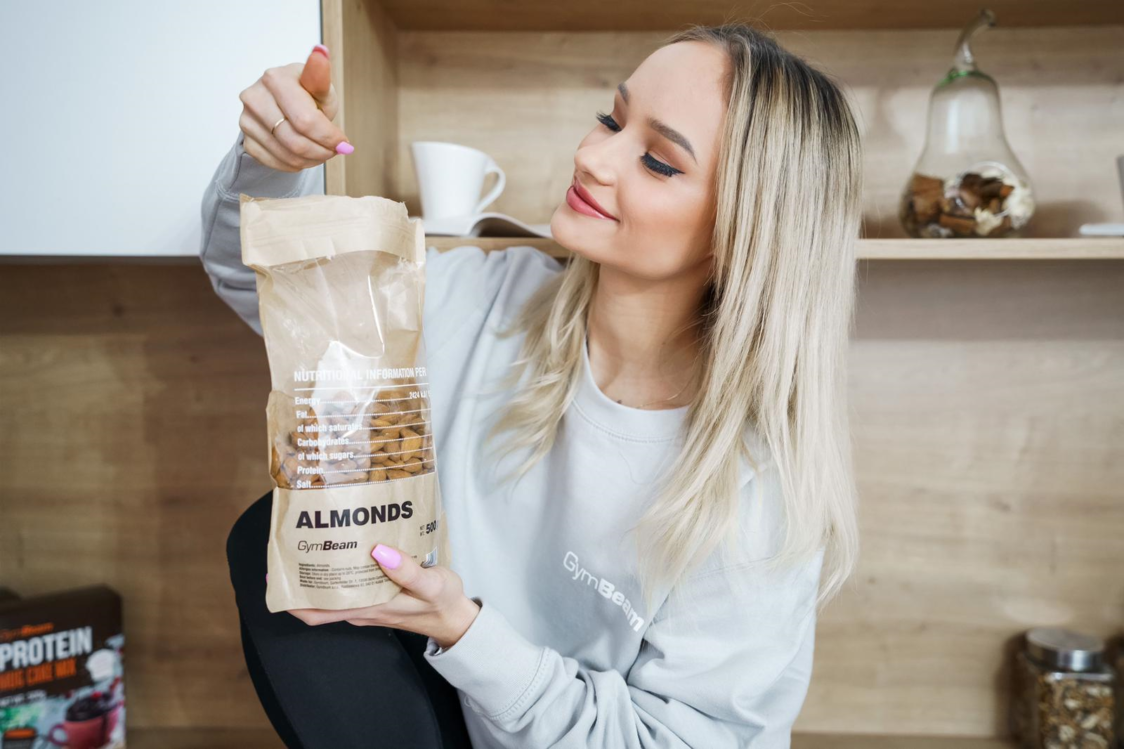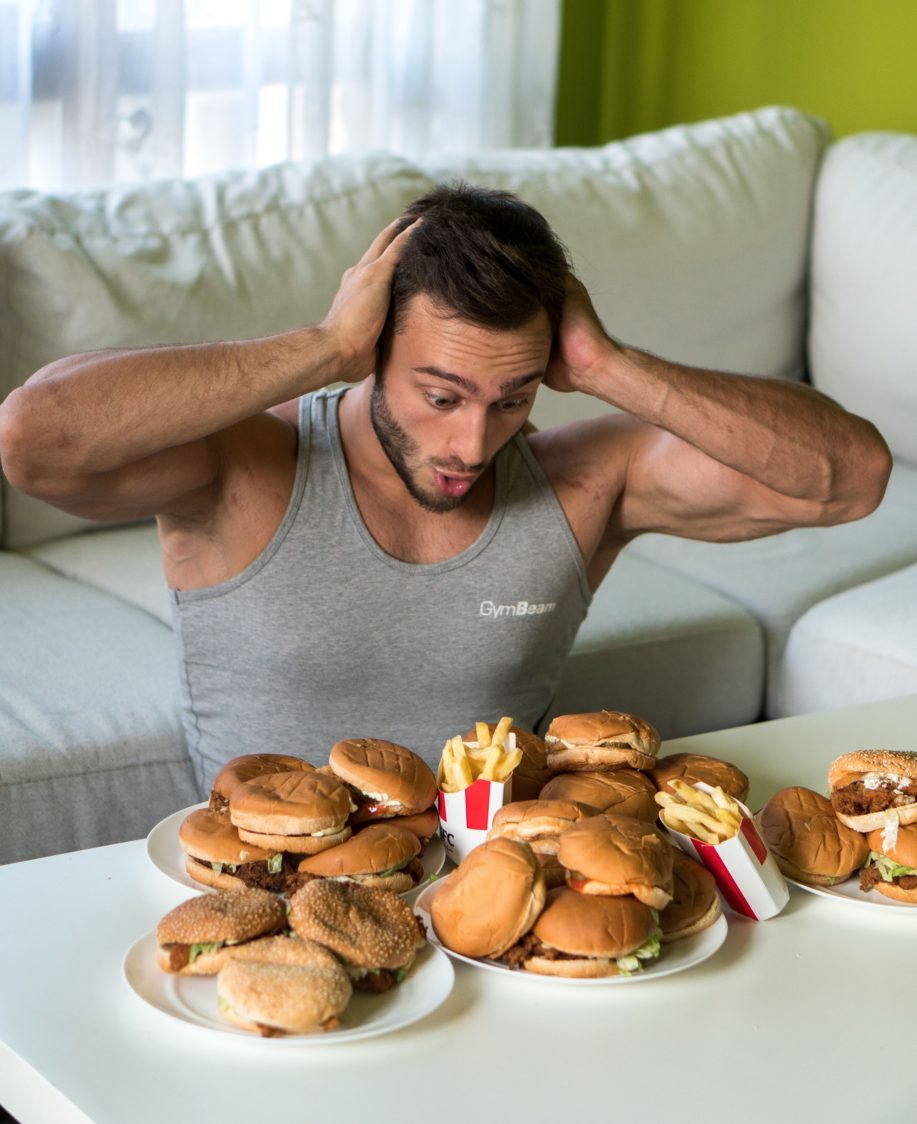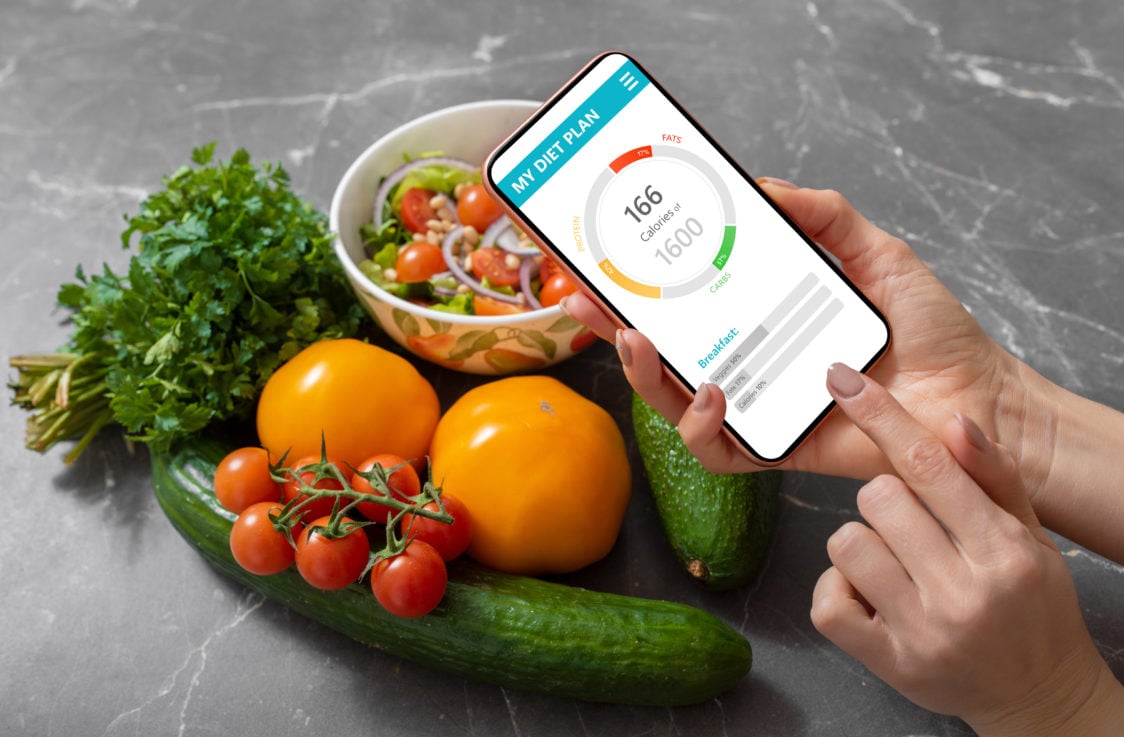Table of Contents
Calorie counting is one of the things that divides society into two camps. For some people, this is the one and only method, others get goosebumps just at the thought that their favourite hamburger should become a “mere number” and on top of that they would have to write down its values in some diary. Whether you’re a fan or an opponent of calorie counting, you can’t deny that it’s a very effective method of controlling your intake to make it easier to achieve your dream body, or just to learn how much you really need to eat. If you are considering starting calorie counting, we have a few tips for you that will greatly simplify the whole process.
How many calories should you eat?
Before you start counting the calories in every food you consume, you need to find out how many calories and macronutrients you actually need to eat to reach your goal. The article “How to Calculate Energy and Macronutrient Intake for Weight Loss or Muscle Gain?” will help you with that. An even easier option is to enter your weight, height and other specific data into our calculator, which will calculate your intake according to the set goal.
How much energy and macronutrients do you need?
Weightlifting in gym, circuit training in gym, crossfit, bodyweight training, street workout
Hockey, football, volleyball, basketball, floorbal, futsal, tennis, squash, table tennis
TRX, circuit training, body pump, aerobic and other classes led by an instructo’
Running, swimming, cycling, rowing
I lift weights
Weightlifting in gym, circuit training in gym, crossfit, bodyweight training, street workout
I play team or racquet sports
Hockey, football, volleyball, basketball, floorbal, futsal, tennis, squash, table tennis
I do demanding group trainings
TRX, circuit training, body pump, aerobic and other classes led by an instructor
I do endurance sports
Running, swimming, cycling, rowing
What should you know about macronutrients?
In order to be able to work better with food and its caloric value, it is necessary to have at least a basic idea about individual macronutrients.

1. Protein
Protein is a macronutrient that promotes bone health, muscle growth, protects and helps to maintain muscle during weight loss and can also help get your sweet munchies under control. However, protein is also important for the immune system, as it is the building block for its cells. The energy value of 1 g of protein is 4 kcal. [1–4]
Protein sources:
- meat, fish, eggs
- cottage cheese, yoghurt, cheese and other dairy products
- vegan meat substitutes (tofu, tempeh, seitan)
- pseudo cereals (buckwheat, amaranth, quinoa)
- legumes (lentils, beans)
- nuts and seeds
- proteins (whey, vegetable)
- protein bars, protein biscuits, etc.
You can learn more about protein sources in article 20 Foods with Which You Can Easily Add Protein to Your Diet.
2. Carbohydrates
Carbohydrates are important in our body mainly because they serve as a preferred source of energy. The energy value of 1 g of carbohydrates is 4 kcal. [1] [2] [5]
Sources of carbohydrates:
- whole grain cereals (oat and spelt flakes, flour, rice, pasta, pastries)
- pseudo cereals (buckwheat, amaranth, quinoa)
- regular and sweet potatoe
- legumes (lentils, chickpeas, beans)
- fruits and vegetables

3. Fats
Even fats serve in our body as a source of energy. They are an important part of the cells and are involved in the production of various hormones in the body. At the same time, fats also protect our organs. The energy value of 1 g of fat is 9 kcal. [6]
Sources of fats:
- nuts, seeds, and nut butter
- butter, ghee and oils (sunflower, olive, pumpkin)
- olives
- avocado
- fat, which is a natural component of animal protein (for example, fat in beef)
4. Fiber
In addition to the above-mentioned macronutrients, you should take care of the sufficient intake of fiber, as it performs many important functions in the body. Insoluble fiber is non-degradable and can help, for example, with digestive problems. On the other hand, soluble fiber has swelling capacity in the body, thus inducing a feeling of satiety, which is especially useful when losing weight. Compared to other macronutrients, it contains only 2 kcal per gram. [7]
Sources of fiber:
- fruits
- vegetables
- legumes
- cereals and whole grains
Why count calories
Although calorie counting may seem as challenging as quantum physics at first, you will see that it will become easier for you over time until you eventually find that it only takes a few minutes each day. Sure, getting started is always hard, but maybe the fact, that there are it has some positive benefits will help you get going.

1. You will understand your food better
Chocolate will always be chocolate, but did you know that you don’t have to perceive it just as a sinful treat, but also as a great source of healthy fats from high-quality cocoa? If you learn not only to look at food as a final product, but also to perceive its specific components, you will be able to better supply the body with the necessary nutrients and eliminate what does not benefit it.
2. You will overcome the fear of certain food
Do you live in the world where you gain a kilogram every time you eat a fast food meal? When you learn to work with calories, you will find that a fast food cheeseburger is not food that will make you immediately gain weight. It’s just about 300 extra kcal in your daily energy intake. And if you deduct these 300 kcal from another daily meal, you can even stay in a caloric deficit and lose weight.
However, this certainly doesn’t mean that a fast food burger should become an everyday part of your diet because it also depends on the quality of the food. However, if you have it once in a while, nothing will happen.
3. You will be able to pick he right food
Do you have your business lunch scheduled in a restaurant, and you don’t want your food to drastically increase your caloric intake? Then this is the situation when your careful daily calorie counting will be handy. You don’t have to end up with a salad just because it’s generally considered “dietary”. You may be surprised by how many calories can be hidden in a salad dressing. Instead, choose a complete meal to supply the body with quality protein, carbohydrates and fats. By counting calories, you will know about sources, so you can make the right decision. How about choosing salmon, potatoes and vegetables?
4. You will understand your energy swings
During yesterday’s workout, you had a lot of energy and everything went great, but today you feel like you’ve been hit by a truck? Sometimes even a lightweight dumbbell can make you sweat. Try looking at your food diary and think about whether food is to blame. Maybe the higher carbohydrate intake that provided you with energy yesterday could be a reason you had so much energy during the workout? In the same way, thanks to writing down calories and specific macronutrients, you can observe which meals make you feel good and when, on the other hand, you are ready to lie down in bed and have a nap. You can then work better with this information, and thus improve your performance not only in the gym, but also during important work tasks or exams at university.

5. You will be able to live healthier
Many people would like to eat “better” to be healthier and feel great, but somehow they don’t know where to start. Counting calories can be a great way to find more and less suitable foods, understand their composition and find out what to eat to support the health of the cardiovascular system and reduce, for example, the risk of diabetes or other civilizational diseases. All this, of course, provided that your diet is balanced. You will also know that indigestion may be related to your fiber intake, for example, so it is not necessary to start popping pills immediately. For example, sometimes it might be enough to focus on getting enough fruits and vegetables in your diet.
6. It will be easier for you to maintain results
If you manage to lose weight thanks to counting calories and achieve your dream body, it’s great. Even better, it will be much easier for you to maintain your results. Nobody wants you to count calories all your life. However, by trying it out for some time, you will certainly understand the approximate size of your optimal portion and also its suitable composition. Thanks to this, you can easily estimate your portions in the future and maintain your weight. That’s why calorie counting is very different from a custom diet plan. You will also be able to lose weight with it, but if the specialist does not teach you how to work with food, it is quite likely that you will gain the lost weight once you return to your old eating habits.

How to start with counting calories
Now that we know how many calories and macronutrients we should receive, we have an overview of what proteins, carbohydrates and fats are, and we also know the benefits of counting calories, we can start finally get on with it.
1. Download apps which make the process easier
Nowadays there are many mobile applications which can simplify our life, and even the process of counting calories. From the very beginning, MyFitnessPal app, for example, can be a great helper for you. In this app you just enter input data, or you can have it calculated directly by the application, and then you can start with your logbook. So, that you don’t have to search for specific products, all you have to do is scan a barcode on any packaged food and the app will find it for you.
However, other applications can also be a great help, such as MyNetDiary, which is also used to record the food you consumed. In addition, it contains hundreds of healthy recipes that you can take inspiration from if you decide to change your eating habits. And if you are already proficient in counting calories and want to learn even more about food, the Nutrients – Nutrition Facts app can help you. It contains tens of thousands of foods, and also, for example, their detailed content of vitamins and minerals. You can also find this information on the US Department of Agriculture website.

2. Weigh servings of your most used foods
The kitchen scale is a great thing, but what will you do if the batteries die? Will all the efforts to lose weight be lost? To learn how to evaluate your food better, create a table of your favourite ingredients and weigh the amount used into a cup, spoon or measuring cup. Then, when you cook, you don’t have to pull out your scale again. You just need to remember how much the given raw material usually takes up in your cup. You can also make a line there for individual ingredients, or you can take inspiration from our tables, which contain several raw-weighed foods (the values given may vary depending on the specific type of product). [8]
Hoe many calories do carbohydrate sources have?
| 100 g of raw material | Kcal | Carbohydrates | Proteins | Fats | 1 cup 250 ml |
|---|---|---|---|---|---|
Pasta | 357 | 73 | 12.5 | 2 | 110 g of pasta |
| Lentils | 286 | 66 | 23 | 1.5 | 210 g of lentils |
| Oatmeal | 375 | 67.5 | 12.5 | 6 | 160 g of oatmeal |
| Rice | 356 | 80 | 6.5 | 0 | 210 g of rice |
Keep in mind that raw materials will change their volume when cooked. How much the weight will vary also depends on the cooking time. However, in some cases, it can increase by even 100-200%. So if you are worried that one cup of lentils has 632 kcal, keep in mind that after cooking you will have up to 600 g of lentils, which is definitely not a small amount. A similar table can be created even for measuring sources of fat.
How many calories do fat sources have?
| 1 teaspoon | Kcal | Carbohydrates | Proteins | Fats |
|---|---|---|---|---|
| Peanut butter (15 g) | 96 | 3 | 4 | 8 |
| Olive oil (5 ml) | 41 | 0 | 0 | 5 |
| Coconut oil (5 ml) | 44 | 0 | 0 | 5 |
| Butter 5 g | 37 | 0 | 0 | 4 |
For some people, the source of protein, such as meat, may be the hardest to estimate. In this case, the easiest way is to weigh it right after you buy it and then freeze it, for example, in 100g portions. If you buy a package of chicken breasts that weigh 400 g and contain two pieces of meat, simply try to make 4 pieces of approximately the same size. With tofu, seitan and similar substitutes, it is easier to accurately estimate the amount due to their regular shape. And if you get into a situation where the food will be served to you by someone else, and you will not have control over the weight, you can try imagining that proteins should take up about ¼ of your plate.
How many calories do selected sources of protein have?
| 100 g of raw material | Kcal | Carbohydrates | Proteins | Fats |
|---|---|---|---|---|
| Chicken breast | 110 | 0 | 23 | 1 |
| Beef round steak | 172 | 2 | 20 | 9 |
| Pork tenderloin | 143 | 0 | 21 | 4 |
| Smoked tofu | 139 | 1 | 17 | 8 |
When creating tables similar to the ones above, we recommend that you do not follow the amount you find on the Internet, but create it yourself. One cup is different from another. Likewise, a teaspoon of peanut butter can be many sizes, and thus differ by tens of calories. When you measure the individual weights yourself, eventually you will learn to estimate the amount perfectly and with confidence.

3. Save your favourite recipes
If you have a completely different meal on your plate every day, good for you, you can be sure that you will not get tired of anything. However, a large part of the population has their favourite dishes, which they regularly swap around during the month. If you are also one of them, we have a tip for you on how your calorie counting easier – save your recipes. In a calorie counting apps, it is usually possible to create your own meal. Then the next time you cook this food again, you don’t have to click on all the ingredients. All you have to do is choose “your” recipe, adjust the weights of the individual ingredients and that’s it. For example, you can increase the amount of vegetables as needed instead of a carbohydrate side dish. Alternatively, add more peanut butter if you need to supplement fats.
This function is also very practical, for example, for baking, as it allows you to write down only a certain part of the finished treat. If you bake a big portion of a dessert, it is not necessary to cut a piece, weigh it and then calculate proportionally how many individual ingredients are in that one piece. The app will do that for you. Similarly, you can use this function even if you cook for more people. Again, you can weigh only your portion and the application calculates the ratio of individual ingredients.
4. Plan ahead
For people who are not yet fully versed in calorie counting, we can recommend one thing – planning. Preparation is the key to success. Especially during this process. I believe that no one wants to write down what they have already eaten after lunch and find that they have only 200 kcal left for the rest of the day. However, this can easily happen to anyone who has no idea what amount of energy can be hidden in their favourite foods. In the first weeks, it will be best if you plan and write down at least all 3 main meals the day before. Not only will you plan your meals evenly throughout the day, but you will also save time during the cooking process.
After a few weeks, when you get to know your food better, you can record your meals in the apps throughout the day instead of doing everything in advance. You will be able to estimate how many calories and macronutrients particular food has and plan the portion size appropriately, so you don’t end up eating all your calories during the first half of the day.

5. Don’t look just at calories
Of course, calories are important and their intake determines whether you lose weight, maintain weight or gain weight. However, this is not the only indicator you should pay attention to. Even in this process, you should not forget to eat enough fruits (200 g), vegetables (400 g) and drink enough water. You should drink at least 30-45 ml per kg of body weight each day. In reality, this means that a 60-kilo (132 lbs) woman should drink approximately 1.8–2.7 l and an 80-kilo (176 lbs) man 2.4–3.6 l.
6. Read the labels
Counting calories allows you to sometimes include less “appropriate” foods in your daily intake, while maintaining or losing weight. However, this does not change the fact that in most cases you should try to choose the least processed foods that will supply the body with enough micronutrients and necessary substances. Reading labels will help you make the right decision. When you see a product with half of the ingredients you’ve never heard of, you’d better put it back on the shelf.
How about trying to follow the magic rule of 80:20, where 80% of what you eat is made up of quality food, and the remaining 20% of food that is less healthy but will please your soul and satisfy your cravings? For more information on how this rule works, see How to Eat Pizza, Sweets, and Still Lose Weight with IIFYM?

7. If you make a mistake, don’t panic
No one is perfect and you will most likely make mistakes in the beginning. Sometimes you can even unknowingly go over your recommended intake by hundreds of calories (for example, if you get mixed up values of raw and cooked ingredients). Do not beat yourself up over it. Even 500 kcal extra is nothing that an hour of running wouldn’t fix. Calorie counting is a process in which you will always have something to learn. You will see that in time you will get better and more accurate, until in the end you will come to the conclusion that you will not even need a scale, and you will learn to easily estimate food portion size.
What is the lesson?
Counting calories is definitely not for everyone, which is fine. However, if you embark on this journey, you will learn to better understand food, know how to make the right choice, stop being afraid of certain foods, and you will also be able to live healthier and maintain your figure. From the beginning, however, you need to be patient and accept this new activity as a process in which you are constantly improving. You will see that over time, counting calories will become easier and easier for you, and you will gradually reach a stage where you will no longer even need a scale. For an average person, counting calories is definitely not something you would do your whole life. This tool will be helpful especially in the beginning, before you learn to work with food.
And what is your style – do you count calories, or are you planning to start? Share your experience with us in the comments and don’t forget to share the article with your friends. Maybe it will help them simplify the whole process and achieve their goals.
[1] Thermic Effect of Food – https://examine.com/topics/thermic-effect-of-food/
[2] James Hill, Wyatt, H. R., & Peters, J. C. – The Importance of Energy Balance – https://doi.org/10.17925/EE.2013.09.02.111
[3] Commission Regulation (EU) No 432/2012 of 16 May 2012 establishing a list of permitted health claims made on foods, other than those referring to the reduction of disease risk and to children’s development and health – https://eur-lex.europa.eu/eli/reg/2012/432/oj
[4] Margriet S. Westerterp-Plantenga a kol. – Dietary protein – its role in satiety, energetics, weight loss and health – https://www.cambridge.org/core/journals/british-journal-of-nutrition/article/dietary-protein-its-role-in-satiety-energetics-weight-loss-and-health/CCA49F7254E34FF25FD08A78A05DECD7
[5] M Elia, P Folmer, A Schlatmann, A Goren, S Austin – Carbohydrate, fat, and protein metabolism in muscle and in the whole body after mixed meal ingestion – https://pubmed.ncbi.nlm.nih.gov/3374320/
[6] Know More about Fat – https://www.chp.gov.hk/en/static/100023.html
[7] Mohammed S. Razzaque – The Role of Fiber in Energy Balance – https://www.hindawi.com/journals/jnme/2019/4983657/
[8] FoodData Central – https://fdc.nal.usda.gov/index.html


Add a comment
You must be logged in to post a comment.